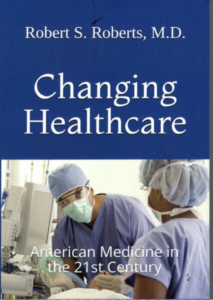
In Parts I and II of this series, I have tried to explain some of the problems with Medicaid. This is significant for two reasons:
First, the amount of taxpayers’ money being spent on Medicaid has been skyrocketing lately to the point where Medicaid spending was $894 Billion in 2024, exceeding the Defense Department spending of $841 Billion. It has grown from about $402 Billion in 2010, more than doubling in just 15 years.
Second, as the new Department of Government Efficiency (DOGE) tries to cut waste, fraud, and abuse in our federal government, no one should be fooled into thinking that cuts in Medicaid spending are going to adversely impact the health of the American people. This second point is illustrated better in today’s Part III information.
Chris Jacobs, writing in The Wall Street Journal, tells us Medicaid expanded during the Covid pandemic as a temporary response to this health crisis. Medicaid eligibility was expanded to allow people to access healthcare during this crisis since many had lost their jobs. But the emergency ended in 2023, yet the Biden Administration prolonged the declared emergency allowing millions of more Americans to enroll in Medicaid who were not previously eligible due to their higher income status.
In January, 2025, the Congressional Budget Office (under the Biden Administration) increased its projection for 2025 Medicaid enrollment by another 5 million people compared with its June 2024 baseline.
Jacobs says, “This enrollment rise was the largest factor in the CBO’s projected $817 billion jump in program spending over the coming decade. As Congress works to pass Medicaid reforms in budget reconciliation legislation, lawmakers can reverse this continual expansion of government coverage by enacting policies that promote private insurance options.”\
While Covid-era legislation helped get us where we are, it was ObamaCare’s expansion of Medicaid to able-bodied adults that kicked things off. Though the Affordable Care Act prohibited those with an offer of “affordable” employer coverage from qualifying for federally subsidized ObamaCare exchange plans, it had no such restrictions regarding its Medicaid expansion. Any enrollee in an expansion state who meets the law’s income criteria qualifies for coverage, giving households every incentive to drop their existing insurance and enroll in “free” Medicaid.
As a result, expanded Medicaid has crowded out private insurance options. A 2007 study co-authored by Jonathan Gruber, one of ObamaCare’s architects, found that coverage expansions had crowd-out rates of roughly 60%. A 2008 analysis by the Kaiser Family Foundation found that, even among households of modest means with incomes between one and two times the poverty level, 44% had private coverage, suggesting that Medicaid expansion would erode existing sources of insurance.
This exact scenario was demonstrated in Louisiana where Department of Health data showed that between 3,000 and 5,000 people a month dropped their private coverage during the initial months of the state’s Medicaid expansion. The numbers suggested that roughly a third of Medicaid enrollees had left their private coverage to join the government rolls.
This shift from private health insurance shifts the burden of providing healthcare from employers and individuals to the federal and state governments. Democrats favor this transfer of healthcare insurance from private to government because they favor total government control of healthcare – better known as socialized medicine.
But socialized medicine has been tried in many other countries, such as Great Britain, Canada, and Sweden with predictable results. In each of these countries, access to healthcare has declined as government controls that access with limited providers and resources. The government also rations healthcare by determining which procedures and medications you can get and which you can’t. If your diagnosis requires expensive treatments that don’t guarantee success, those treatments will probably not be approved. If you’re over a certain age you may not be approved for expensive procedures like heart bypass or joint replacement surgery All of which leads to diminished healthcare outcomes. We don’t want that in America.
Jacobs suggests, “Republicans in Congress can stop this unending welfare state bloat in the reconciliation process by mandating that states offer premium assistance and requiring qualifying Medicaid beneficiaries to use it. Rather than paying for everything Medicaid entails, premium assistance supplements employer coverage by helping a person pay for costs their private insurance doesn’t. If Congress did this, use of private insurance would expand.”
“Those beneficiaries who switch to premium assistance would gain more options. Private insurance generally offers higher physician reimbursements and broader access to care than Medicaid plans. Such a mandate would complement work requirements in Medicaid, by promoting a path to self-sufficiency and employer-based coverage rather than a life of dependency on the government. And requiring premium assistance would accomplish both objectives in ways that save taxpayers money.”
We must remember that expanding the rolls of Medicaid does not mean more Americans are getting better healthcare. Without access to good quality healthcare, a Medicaid card is nothing but a piece of paper.

